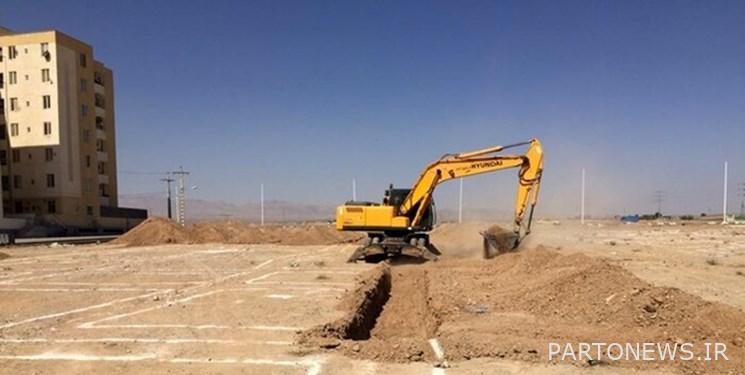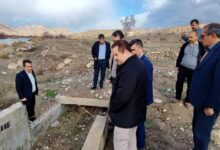Media Tricks in Cognitive Science | Technique 58: Inverted ground

Fars News Agency – Media Group: In the cultural atmosphere of the society, there are certain institutions and customs that are respected by the Iranian family. The media sometimes seeks to attract and influence audiences by reversing these concepts. A model that wants to, for example, downplay marriage and give it a desirable meaning. One way to promote this new cultural paradigm is to create a greater conflict with society. A technique called “upside down”.
A lot of these inverted lands are made in the media. The introduction of dogs into Iranian culture is a new phenomenon that wants to make it popular and give it a kind of culture. One of the problems of our domestic institutions and media with this cultural attack is that it proceeds in the same way.
In an interview with Fars, Alireza Davoodi, Master of Media and Cognitive Sciences, while explaining the function of foreign Persian language media regarding the “inverted ground” technique, said: “You usually walk on the ground with your feet, now imagine turning the earth upside down. You are walking on the ground, but vice versa.
Davoodi added: “Inverted ground means reversing the most natural mental events for the audience so that they feel how beautiful, attractive and postmodern this inversion is.”
The Master of Media and Cognitive Science went on to say that the inverted earth usually occurs in the media and cognitive sciences on the function of sacred identities and natures.
He added: “For example, a cleric hugs a dog in clerical clothes and introduces himself as a supporter of animals (Kamil Nezafiti). Becomes.
Davoodi clarified that either the party is appointed to a senior managerial position in the holy system of the Islamic Republic and embezzles in an obvious violation, as well as the holy chaffee turns the holy defense fighters into headscarves for unveiled women, or every year in During Muharram, some mourning delegations use the citadel to hold mourning ceremonies, and various other examples, such as Valentine’s Day, divorce celebrations, and songwriting at funerals.
The tricks of foreign media to change the minds of Persian-speaking audiences are increasing day by day, knowing and understanding this war is part of the media literacy needed by our Iran today. Therefore, the media try to intervene in this process according to their goals. Creating, changing or strengthening beliefs is one of the functions of the media in accompanying the audience.
This is where he engages in behaviors based on new beliefs, such as domestic ones, participating in elections or supporting the policies of the ruling system, or increasing the credibility of the ruling system in their beliefs. But if it is an external messenger, the practical consequences of this belief vary from attempting civil disobedience to attempting to overthrow the regime. In some cases, even the unwanted audience plays the role of a spy for a foreign country. The pattern of “creative riots” seen in some foreign-led protests in Iran, Iraq and Lebanon is formed in the process.
Real needs to be weighed and false needs to be made. The process of transmitting a message begins based on these two types of needs, a need is formed in the recipient of the message and the source of the message seeks to respond to that need, which is called a needs assessment, or the sender tries to achieve a goal. It delighted the audience that interpretation is needed.
Research has shown that we pass by constructive news easily, but we constantly review negative news and emphasize it much more than it’s worth it. This is a kind of cognitive error known as “negative information bias”. Most of our brains turn to negative news, which means that if we are exposed to an equal amount of positive and negative information, we will pay more attention to negative information and pay more attention to it. In fact, our brain’s reaction to negative thoughts and news is an adaptive encounter that is essential for human survival and is the result of evolution. Biologically, the higher sensitivity of the amygdala and the noradrenergic centers of the brain (the locus ceruleus nucleus) play a role in creating repetitive neural circuits and focusing more on negative news. Due to these facts, the international media portrays negative news with a higher level of excitement in order to attract and retain the audience and the user.
The “Narrative of Colors” short program series is a narrative of warfare techniques that is produced and broadcast on the Radio Dialogue radio network.
Media techniques have entered the field of cognitive sciences in today’s world, so Radio Dialogue has prepared a 90-part program to acquaint the audience with these techniques.
“Narration of Colors” is the name of this series of specialized programs in the field of cognitive sciences with the focus on media tricks in diverting public opinion, which has achieved the mission of this network in creating effective influence on the elites and activists of Iranian society.
This program, which is designed and produced in the form of new structures, in each part and in a conversation with Dr. Alireza Davoodi, media expert and cognitive science expert, with a specialized and analytical approach and with objective examples to expose foreign media techniques and The dissident seeks to destroy the mind of the Iranian people.
The narration of colors is presented to the interested people every day at 11:55 AM on the 103.5 MHz FM band talk radio.
End of message /
You can edit this post
Suggest this for the front page
.

